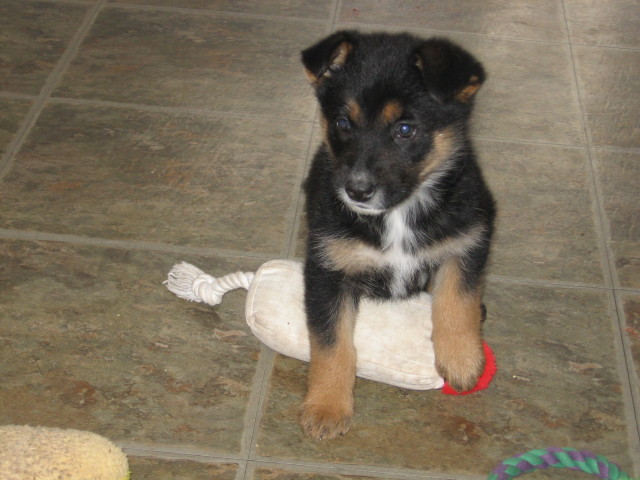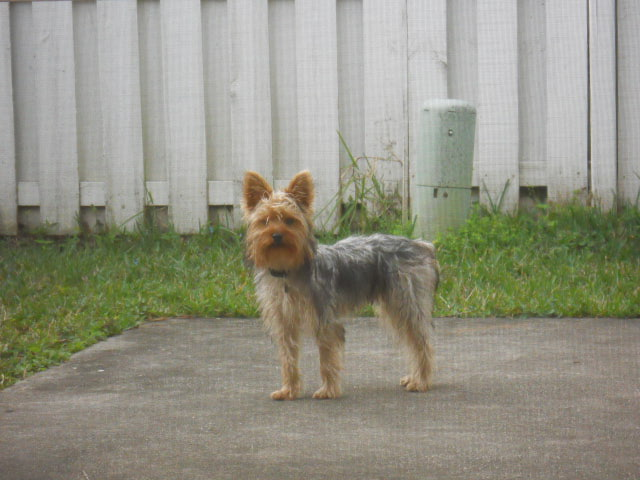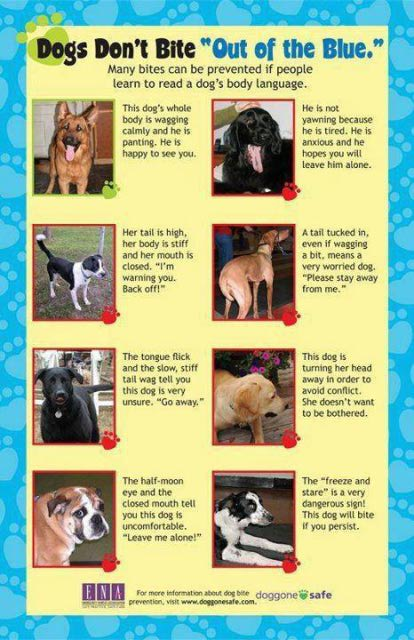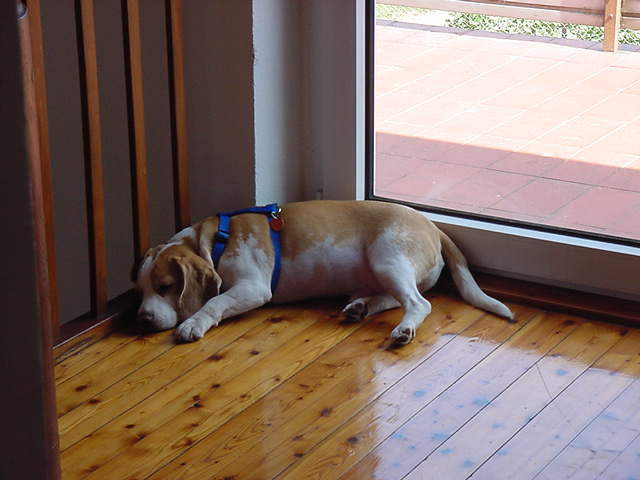QuestionQUESTION: I have recently adopted (3 months) a Brussels Griffon mix (she is between 2-4 years old) - I don't know anything about her back ground- possible puppy mill, but I do believe she spent a great deal of time crated. She seems to be a little OCD(spends a lot of time licking paws or anything else she is near#. I have a crate and a bed set up in the corner of my bedroom for her. I also have another dog and 4 cats. The past week I noticed that she either stays in her corner or anytime one of the animals heads in that direction she seems anxious and follows and then settles back in that area. Yesterday I heard her whimpering #sounded anxious# and found her outside her crate- one of that cats had settled in the crate. I took the cat out and put the cat across the room in another bed. She kept going over to the cat and whimpering and I have no idea why - what does that mean? She is very prey driven #chases squirrels). I understand that she seems to be guarding but why would she keep going over to the cat? She is quite sweet - there doesn't seem to be any aggression involved- just anxiety. I don't know what she would do if I didn't call her away from the cat. Can you help me to understand what is going on between them and how to deal with it. Thank you for your time.
ANSWER: Any dog will chase squirrels, this is not an indication of high prey drive. Your BG is not "guarding". Any sort of "guarding" behavior involves growling, snarling, baring teeth, snapping or biting. Since the cat was in her space, she's interpreting the cat's behavior in the only way she can: she's a dog. She most likely has never seen a cat and has no way of making "sense" of the cat or its behavior. The cat, on the other hand, is well habituated to dogs (since you have one) and is making itself at home (literally) in the BG's space without displays of FEAR. The cat does not behave like "prey" (runs), the dog is confused and has no way to interpret the cat's behavior (and so MUST rely upon the dog-to-dog display of communication) and is most likely following the cat and whining because of her own confusion and anxiety. It's unlikely that the BG would respond with aggression toward the cat. So long as the cat persists in a calm interaction (does not RUN), the BG will habituate to the cat's presence. If all of your cats are as well habituated to dogs, they will ALL demonstrate a calm demeanor and the BG will not chase them, either. This dog is simply trying to make sense of her environment.
The OCD behavior needs to be addressed in a calm manner. A dog that licks its paws (or anything else that presents itself) may have acquired this behavior as the result of boredom but there's an element of anxiety involved. Redirecting her by interrupting her licking with a calm cue ("stop licking") and redirecting (after ten seconds) to another behavior (either safe chew toy or brief interaction with you) over time (weeks/months) will minimize (hopefully extinguish) this behavior.
It takes an adult dog months to habituate to a new household; this one might have no clue what's going on around her (if she's puppy mill breeder or from a neglectful first owner). Her temperament appears very sound. You can help her to make this adjustment by teaching her one or two behaviors she can offer for reward/praise. If she has other fears, Nicole Wilde's "Help for Your Fearful Dog..." is an excellent resource.
---------- FOLLOW-UP ----------
QUESTION: Thank you - I really appreciate the help. She has been w/cats- I was told she was good with them. She will chase after a cat outside even if it is sitting. What do I do when the cats play and chase each other in the house- she gets very excited. I have been putting her on a leash because I am not sure what she will do but that probably makes her more excited. What is the best way to handle her excitement? Thank you again.
ANSWER: Since she's lived with cats her excitement is most likely just a reaction to what she's seeing (which might appear distressing since she doesn't understand what's going on). I once had a rescue dog that was a cat killer (I found that out when I placed her the first time and she literally -- out of the clear blue sky! -- "attacked" a cat that wandered into the yard: I had wondered up to that point why this dog had been dumped, I then had my answer.) That dog lived with MY two cats without ANY demonstration of aggression at any time. What's part of the household environment and accepted as such doesn't elicit the same prey drive as something that doesn't "belong" (usually). Keep the leash on her so you have a way of stopping the reaction should it escalate into full blown chase (by stepping on the leash). By simply investigating the cats at play, she isn't necessarily giving an indication of threat. Restraining her (by holding the leash at all times when the cats play) is making the situation worse. So long as the cats are generally not fearful of her, never run FROM her, and approach her freely, she should become accustomed to them. If something in their behavior does elicit full out prey drive, you'll have to deal with truncating it by counter conditioning. Let's cross that bridge when we come to it.
---------- FOLLOW-UP ----------
QUESTION: Thank you again - I am taking your advice and have a better understanding of what she is going through. I am not very experienced w/dogs so I have a couple more questions- I am probably the 5th or 6th home she has been in - she was being fostered for quite awhile. I have been taking her to training to bond but she is very aloof and doesn't respond for the most part. I understand I am probably just another face to her but would you have any bonding advice for me? She also pulls and barks when we walk by dogs- in class she will growl a bit if a dog gets to close. Is this fearful behavior? When we walk and she starts pulling and barking she is in such a zone she doesn't listen to me till the other dog has passed by and is up the street. She gets along very well w/my Pug and is very responsive and affectionate w/people. I want to do the best I can to help her adjust - this is all new territory for me. The Pug is my 1st dog and have had him since he was a puppy and he is a peach. I really appreciate your time- thanks again.
AnswerI have no idea why you are the 5th or 6th home but this is what I have to say about that: any rescue organization that takes responsibility for seriously abused or neglected dogs also has the responsibility to:
1. Be certain the dog goes into the right home THE FIRST TIME
2. Offer experienced behavioral intervention for FREE
3. Be honest about all matters pertaining to the dog's behavior, ESPECIALLY if the dog has failed in a prior placement.
If you obtained this dog from a bona fide rescue organization (not just some group of people who are doing more harm than good), you need to CALL the representative who is responsible for temperament evaluation and ask them WHY this dog has been in so many homes. This is exceptionally important information. People (not YOU) adopt dogs for all sorts of reasons some of which are malevolent and much of which are plain self serving or downright stupid. A person (not YOU) might expect "lassie" or a stuffed animal, might not be smart enough to figure out that a puppy mill rescue is going to take a VERY LONG TIME to house train, might expect such a dog to be friendly to all comers, and then might dump the dog because it doesn't live up to these absurd expectations. BUT FIVE homes? We need to know the dog's history. Either this rescue organization is comprised of idiots or this dog has issues you have yet to observe, and we need to KNOW WHICH IT IS.
I want you to contact them asap. Let's get a history: who adopted her, under what circumstances, what was involved in her behavior that caused her to be returned so many times, how was she treated in these prior homes, WHO DID A HOUSE CHECK and WHY did they put this dog into multiple homes that were so obviously inappropriate? You might not be able to use the followup feature to answer these questions as I think there is a limit regarding followups so I will need you to copy this entire conversation (all of the above) into a document and then paste it into a new question so I will have all the facts as well as any result from your phone conversation(s).
Regarding the group training class: until this dog has bonded with you and trusts you, it might not be a good idea to drag her into a situation where she obviously feels threatened (by the other dogs and possibly by the busy environment). This is "flooding" and can worsen her fears. I can't see anything from here but your statement that she doesn't respond (in training) and growls as other dogs approach is a sign of fear and unless it is being very carefully addressed by a very experienced and credentialed trainer at the time of occurrence, it is working against you. I really don't know how long you've had this dog (you said adoption was recent); it takes an adult dog months to habituate to a new environment and one that has never formed any bond with any human (and has had fearful experiences with humans) can take quite a while to freely approach a human caregiver. Rehabilitating this total lack of socialization to human(s) takes a lot of time and a great deal of patience. Normally, an adult dog that has been through a great deal becomes a very loving companion eventually, but our expectations of what such a dog "should" be, or "should" behave, have to be set aside. You should be the source of all things good in a calm, confident and consistent manner. No force, coercion, punishment or harsh words should be used at all for any reason. Training scenarios that entail such should be avoided.
When a dog is fearful of any object(s), counter conditioning is called for but first the dog's reaction has to be interrupted. Let's say a dog barks/growls with hackles raised or other body language of fear/threat when A approaches. The dog must be conditioned to a "follow me" cue strongly enough so as to interrupt the BEGINNING of the fight/flight reaction (i.e., handler anticipates the response and interrupts AS it begins or even better BEFORE it begins); a "follow me" cue is given, dog is then walked in opposite direction a few steps then circled (with verbal encouragement "Good Girl"), then stopped for "sit" and rewarded (treat/praise). The movement interrupts the fight/flight mechanism and the circling changes brain wave patterns, meanwhile dog is 'working' (following cue) and then 'sitting' for treat/praise. In this manner, the dog begins to change its association with A and slowly (over time) desensitizes to the approach of A.
Training a dog to "follow me" is fairly simple since this is the natural instinct of the domestic dog (although some breed types are bred to PULL the instinct to FOLLOW is still present). As the dog is walking along, a cue is given as a change in direction is made, along with a tiny treat as the dog clearly responds (attention and a slack leash). This is randomly repeated until the dog clearly understands the "come along" cue and follows it routinely (can take weeks). Then the dog is taught to "sit" when you stop moving forward as you see below:
http://www.youtube.com/watch?v=yTj9ntQj5zU&feature=related
Although desensitization is difficult, counter conditioning is not. A 'working' dog can't get into trouble: fight/flight mechanism doesn't override cognition. Your dog is most likely fearful of a great many things and all of this can be successfully addressed over time. Some fears are more difficult to extinguish and some are impossible by can be managed. Nicole Wilde's "Help for Your Fearful Dog: A Step by Step Guide..." is a good resource.

 puppy problems
QuestionQUESTION: I am the proud owner of 2 german shep
puppy problems
QuestionQUESTION: I am the proud owner of 2 german shep
 agressive silky terrier
Question
Lucas 1 year old
Hi Jennifer:
I have a
agressive silky terrier
Question
Lucas 1 year old
Hi Jennifer:
I have a
 Agressive 1 yr old mini goldendoodle
Question
our millie
My husband and I got our min
Agressive 1 yr old mini goldendoodle
Question
our millie
My husband and I got our min
 Is this aggression, dominance, or play?
QuestionQUESTION: I have a question regarding doggy beh
Is this aggression, dominance, or play?
QuestionQUESTION: I have a question regarding doggy beh
 licking the floor not stop
QuestionGeorgie
QUESTION: Hi,
I have a 7 year ol
licking the floor not stop
QuestionGeorgie
QUESTION: Hi,
I have a 7 year ol